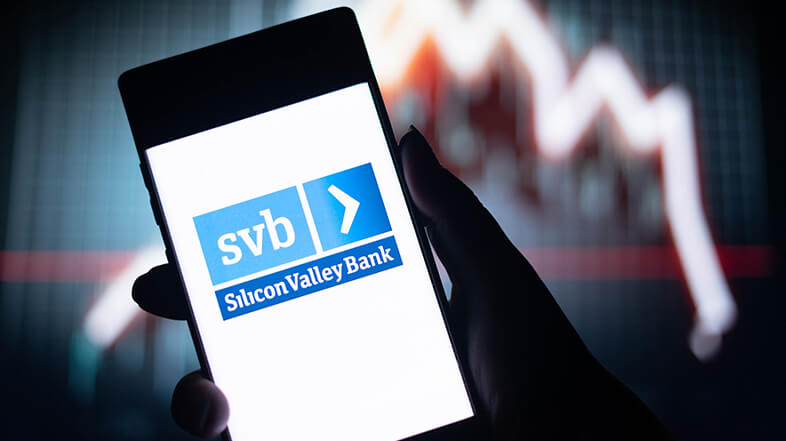
The Banking Crisis: What Investors Need to Know [Video Explanation]
There’s a lot of concern about the banking industry following the collapse of the Silicon Valley Bank (SVB).
So what happened and how does this affect the average 401(k) investor? Keep reading to find out.
What Happened to SVB?

Before we dive in, it’s important to note that the tier one capital requirements – which are reserves in the banking industry and the first money that the banks would pull for liquidity – are actually at multi-decade highs.
In other words, banks are very well capitalized right now versus 2008.
So, what happened with Silicon Valley Bank? In our opinion, this was an isolated case – mainly due to their unique vulnerabilities.
Most of their lending was to venture capitalists and startup technology firms. In order to get a loan, firms had to agree to keep all of their money in the bank.
As a result, over 90% of their depositors had above the $250,000 FDIC limits in their accounts.
Another factor contributing to its downfall was the growth in technology – Silicon Valley Bank’s business exploded.
Normally, that’d be a good thing. But not in this case.
Here’s why: Since 2019, the average bank has seen about a 34% increase in deposits.
Silicon Valley Bank saw their deposits triple.
However, their loan growth wasn’t near as much, so they had to invest all this excess capital in reserves, and they invested the bulk of their money in long-term U.S. Treasuries.
The issue here is, when you buy a long-term treasury and interest rates rise as they have been, the price of the bond goes down – if you have to sell it.
Long-term, 30-year treasury bonds, which Silicon Valley Bank had invested a lot of their reserves in, had fallen as much as 40% to 50% in price because of the strong acceleration in interest rates by the Fed.
When business slowed for the bank and companies that had loans and/or deposits with Silicon Valley Bank had to start withdrawing their capital to meet payroll and continue to grow their businesses, Silicon Valley Bank was forced to sell their long-dated treasuries into a market of high interest rates.
Even though those treasuries would’ve been backed by the full faith and taxing power of the U.S. Treasury, when you have to sell early, you sell those bonds at extreme discount to meet liquidity requirements.
They took a $2 billion loss on investments that, if held to maturity, were backed by the U.S. government.
What SVB got was a hard lesson in interest rate risk…and bad management.
Check out the video as Mark Sorensen, our Chief Investment Officer, provides more insight on the banking crisis, current economic conditions, and where he thinks the market is headed in the near future.
Plus chart reviews!
There’s still a lot of uncertainty, but we are quite optimistic about the market – given time.
Remember, time is on your side, and time is your friend here.
It’s not a matter of IF, it is a matter of WHEN the market starts to look a lot better.
If you are wondering how you may better manage your 401(k) during times like this, but don’t know where to turn for help, we are here for you.
We are independent fiduciaries. Our goal is to help you decrease hidden fees, stay in the investments that are working and out of the ones that may not be. Let us help you!
Have questions about your 401(k) performance? Click below to book a complimentary 15-minute 401(k) Strategy Session with one of our advisors today.
Book a 401(k) Strategy Session









